View Articles By Category
- All
- Aquatics
- Awards
- Biking
- Camping
- Conservation & Environment
- COPE/Climbing
- Cub Scouting
- Fishing
- National Jamboree
- NCAP
- Outdoor Ethics/Leave No Trace
- Properties
- Range & Target Activities
- Safety
- Shooting Sports
- Sponsored Content
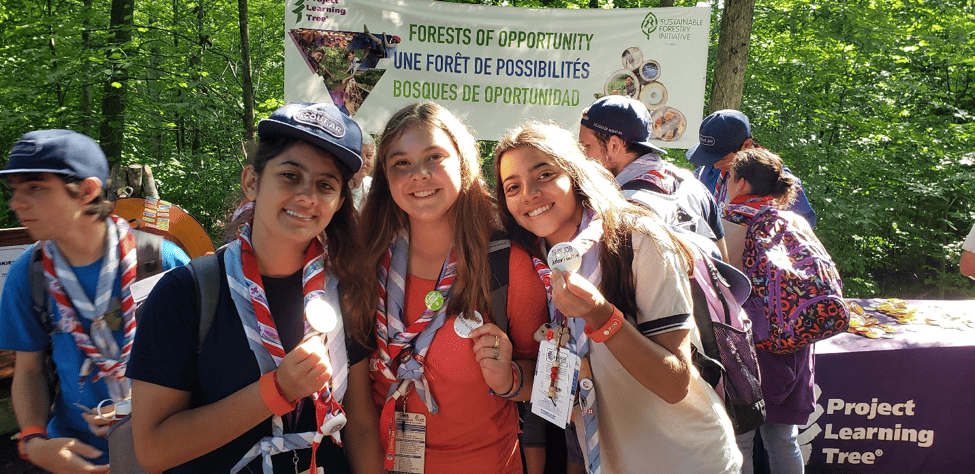
Outdoor Ethics/Leave No Trace
CONSERVATION THROUGH FOREST MANAGEMENT CERTIFICATION. Sustainability is a consideration for today’s council properties. Scouting principles promote responsible use of natural and human resources such as forests, water, land, outdoor ethics, and good stewardship of BSA lands for today and tomorrow. Continuous improvement and measured results are part of a sustainability program. Certification to Sustainable Forestry Initiative® (SFI) Forest Management Standard provides a proof point for responsible – and measurable – management of forest resources.
SFI® is an independent, non-profit organization with a mission to advance sustainability through forest-focused collaborations. Currently over 100,000 acres of both Philmont and the Summit Bechtel Reserve are SFI certified. This means that these properties have conservation plans that are in compliance with the SFI Forest Management Standard that promotes healthy forests.
The SFI Forest Partners Program, which is a partnership between SFI, Meredith, National Geographic, Pearson, Macmillan, Hearst Enterprises and Boy Scouts of America have provided assistance for initial certification, including funding for assessments of potential participants’ plans, consulting fees, and initial audit readiness.
To learn more about the Sustainable Forestry Initiative, visit www.sfiprogram.org. To learn more about how SFI is collaborating with BSA, see www.sfiprogram.org/scouts/.
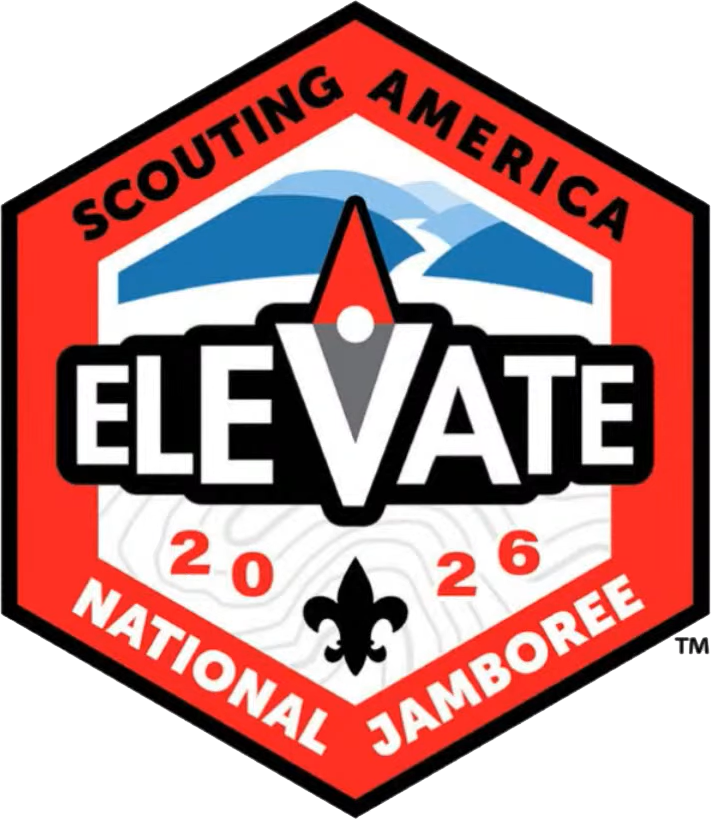
National Jamboree
The next National Jamboree will be held July 22-31, 2026, at the Summit Bechtel Reserve in Glen Jean, WV. In case you have not heard, the theme is ELEVATE and this event will ELEVATE your Scouting and will be a life changing experience not just for your Scouts but for you as well.
So what is a Jamboree? It is Scouting’s premiere event where we gather with over 10,000 Scouts and Scouters who come together to celebrate the spirit of Scouting. The Jamboree is a life-changing experience for both youth and adults who attend. The memories and experiences they have last a lifetime. Friends that are made become lifelong companions and the shared experiences are talked about around campfires for years to come.
So you don’t want to miss out on this opportunity as it only comes around every few years. If you miss this one the next one won’t be until 2029.
Here are a few keys to ELEVATE your Jamboree knowledge.
- ELEVATE your community and learn that Scouting is bigger than just my unit. We plan to have an arena show (or two) to gather the entire Jamboree together to celebrate Scouting and have a great time. it is a sight to see everyone together and to help youth to understand that Scouting is bigger than just my unit, district or council. Scouting is all of us and we will showcase this when we bring everyone together.
- ELEVATE your Scouts by helping them come to the Jamboree! The Jamboree, like most things in Scouting, is only successful when we all work together. We need you to help promote the Jamboree to your unit, your district, your council and to your friends. We need you to help fill contingents of youth, so they do not miss this once in a lifetime event. Most Scouts will only have one opportunity to experience a Jamboree as a youth, so make sure that they don’t miss out.
- ELEVATE your Scouting Journey! The Jamboree relies on great volunteers to help us in all aspects of the event. We need people to run programs, help in administration, operations and logistics to name a few. There is a job for you! Like other parts of Scouting if there is something you like to do, you can do it at the Jamboree. So look to be a part of the largest “staff” in Scouting.
- ELEVATE your reach. If you are looking for some resources to help you get the word out, make sure to check out the Brand Center. Here you will find some social media ready photos and videos that you can share. You will also find the Jamboree “ELEVATE” theme logo and brand guidance. Click on this link to take you straight to the Jamboree resources. https://scouting.webdamdb.com/bp/#/folder/13228711/. Go take a look now at the great images, and videos and share a couple on your social channels… I’ll wait…
- ELEVATE your awareness. Now that you have seen (and shared) the videos, you are asking “How do I sign up?” Registration will open this fall, but until then keep up to date by signing up to receive notifications from us by visiting www.jamboree.scouting.org. Here you will find all the information you need about the Jamboree. Bookmark the site as this will be your main source of information for all things Jamboree. If you did not get a chance to see it, you should also check out the “Trek on Tuesday” where despite some technical difficulties, we shared some great information about the Jamboree. You can find that discussion here. – https://www.youtube.com/live/WOOKLGAp2Cg
The National Jamboree is Scouting premiere event so you definitely do not want to miss it. Make your plans now to participate as a contingent member or on the Jamboree Service Team (Staff). This will be our first Jamboree as Scouting America and you can’t say you have been to every Scouting America Jamboree if you miss the first one! Keep watching for more information and to get signed up.
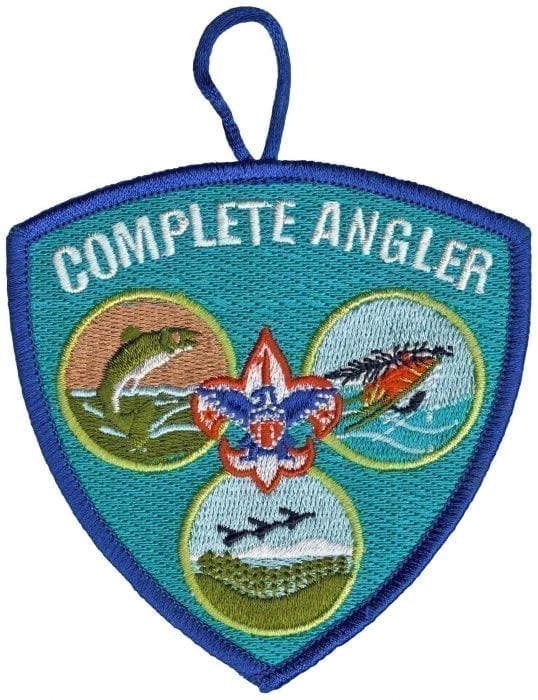
Fishing
The Scouting America Complete Angler Award honors Scouts who earn all three fishing-related merit badges: Fishing, Fly-Fishing, and Fish & Wildlife Management.
Fishing Merit Badge was one of the original merit badges and over two million have earned it. In a recent Boys’ Life survey, fishing placed 4th overall as the preferred outdoor activity, surpassed only by camping, swimming and bicycling. What better way to keep older Scouts involved than by expanding on this trend.
After completing the Complete Angler Recognition, these older Scouts can become mentors for younger Scouts, sharing their knowledge and helping others to enjoy a positive fishing experience.
To become eligible for the award, earn these three merit badges: Fishing, Fly-Fishing, and Fish and Wildlife Management.
Then complete one or more of the following projects:
- Teach a Fishing or Fly-Fishing merit badge skill to your troop, crew or team as part of a unit program activity.
- Help instruct Cub Scouts on fishing skills or fishery management as part of a Cub Scout meeting or outing.
- Participate in a local fishing derby or tournament, either a Scouting or Community event.
- Complete a conservation project that will benefit a local fishery.
Upon completion, this recognition is available for order at your local Scout shop.
Resources:
Complete Angler Recognition Form
https://filestore.scouting.org/filestore/Outdoor%20Program/pdf/Complete_Angler_Recognition.pdf
NCAP
In 2013, the Boy Scouts of America implemented the National Camp Accreditation Program (NCAP). NCAP was established to help councils elevate camps to new levels of excellence in delivering Scouting’s promise to youth. Since then, Councils have engaged in rigorous reviews of their camps and properties, challenged to have continuous improvement plans, while also reviewing their facilities and programs to eliminate any substandard practices.
The Outdoor Programs & Properties Team sat down with Steve Phillips, the National NCAP Committee Authorization Chair to talk about NCAP, explain the authorization process and why this first step may be the hardest but how it helps the council.
Outdoor Programs & Properties: So, what does “authorization” really mean to a local council?
Steve: Well, first let’s try to clear up a confusing word – and that word is camp. In the Boy Scouts of America, camp can refer to a property, or to the program that is being conducted. So, because of this, the BSA states that for a BSA Council to operate a camp, meaning the property or the program, they must be authorized to do this. When a council completes the NCAP Authorization, they are given authority to use the BSA brand, operate BSA programs, and use the BSA insurance for official BSA programs.
Outdoor Programs & Properties: So, are you saying the NCAP authorization gives a council the ability to operate all camps and programs?
Steve: Each council’s NCAP authorization will list the camp properties that they operate, and what types of camp programs they offer at that property. The property will then specifically be authorized to operate unit camping, day camps, short-term camps, and long-term camps on each camp property.
Through the national NCPA authorization, a council will also be authorized to locally “authorize” their council’s day camps and short-term camps throughout the council.
Outdoor Programs & Properties: What is all involved in the authorization and what are you looking for?
Steve: The actual authorization process starts with the “Analysis” step. During this step, the council will complete numerous documents looking at their properties and camp(s) through various lenses. They will gather the attendance and financial information on both the council, and the specific camp properties. They will also look at the facilities and the programs, which will assist them in creating plans for improvement. This planning stage is a key component to the overall authorization process by assisting the council in creating a year-by-year plan of improvement.
Outdoor Programs & Properties: Once the council gathers this information, what is the next step?
Steve: The next step is to share the data with their council’s leadership. By this I mean that the information that is gathered is only as good as what it is used for. The gathering of this data helps “paint a picture” of the property, its camps and how they effect the council. The board members may not always be able to get to the camp, this is an important way to bring camp to the board! Share the pictures of the camps, let them see what they have so that when the camp needs support or improvements, they have a better picture of why.
Also show how the camp(s) are doing financially. A lot of councils have found that they were subsidizing some of their camps, or all of them by a lot more than they realized. Once the board knows the true picture, then they can help solve the challenges. The final step of an authorization process is to have the board approve the authorization application. The application is then submitted to the National NCAP Committee.
Outdoor Programs & Properties: After the application is turned in, then what happens?
Steve: The National NCAP Authorization team has a team of trained volunteers, called authorization reviewers, that review the applications, evaluate the information provided and then write up the official “Authorization to Operate”. This authorization will include what types of camp programs are approved, while also identifying if there are any items that are needing to be looked at or done by the council. Then the documents are reviewed by a national staff member a final time to make certain that the reviewer did not miss anything and to make certain that it is a fair evaluation. The council is then sent the documents for them to sign and agree too.
Outdoor Programs & Properties: How many councils go through this process yearly?
Steve: The BSA has about 250 councils and there are about 50 councils a year that complete this process. The authorizations are for 5 years so we try to level out the numbers to keep the process running smoothly.
Outdoor Programs & Properties: Is there anything else you would like everyone to know?
Steve: The NCAP Team realizes that there is a lot of time and energy that is put into the authorization, but we hope that everyone understands that the process is designed to benefit the council and their strategic planning. There are a lot of councils that have looked at their data and realized that they were not doing as well as they thought they were doing. There were expenses that they never took into consideration when looking at the bottom line. Through seeing these “challenges”, some councils have changed the way that they were doing things to make camp at least balance financially if not creating a revenue. They also started looked at the facilities with a different set of eyes. The authorization process is a crucial tool in the NCAP toolbox!
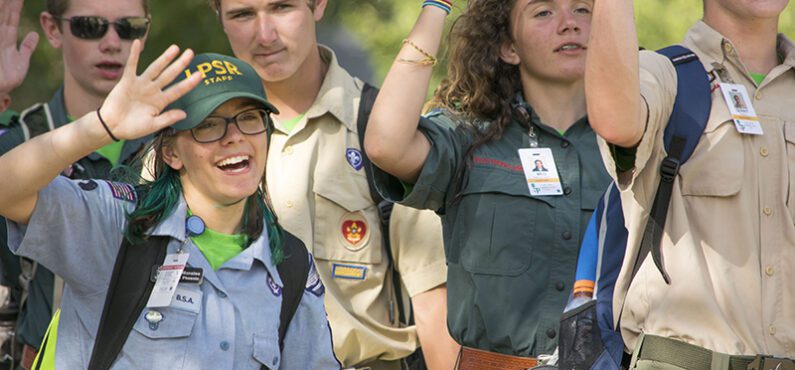
CampingNCAP
As camp begins to wind down for most of us and we begin to think about closing procedures and closing inventories, one thing we need to focus on is our camp staff.
Camp staff can be some of the best and most vocal advocates for our camps and can be the best promoters of our camping programs. So how do we keep them engaged and involved year-round? And how can we leverage the feelings and energy they possess now to springboard us into the next season? Let’s explore some “secrets” to keeping camp staff involved and engaged.
- Do an inventory of staff before they leave camp. Have you asked them if they plan to return next season? It is not too soon to begin collecting applications and commitments now. Especially for those staff whom you know you are going to build upon for the next season. If you didn’t ask before they left, send them an email now! Tell them THANKS and encourage them to apply.
- What is your plan for next season? Have you developed your needs list today? Do you know of a staff member who you will need to replace? Have you looked toward your “bench” to see who is the next staff member that you want to develop and move into a leadership role? Get them committed today and offer them opportunities to get some additional training that will benefit you and your camp.
- Invite them to help you on a year-round basis. Most of our camps offer some programs on a weekend during the rest of the year and not just summer camp season. While some of our staff are away at school, but do they have your calendar of events for when they are home on a break or just want to get away from campus for a weekend? Share your program calendar and weekend needs. Several of our staff live close to camp and would love a way to connect with camp during the “off season” (and of course would not turn down a little cash to come out for a weekend and help run some of your activities). While you may not be able to pay, maybe you can work out some other option for them to come and help. Free food or some gas money go a long way to getting some help. BONUS: This is a part of NCAP standard RP-851.
- Have you invited them to visit or work for another camp? WAIT WHAT? You want me to send my staff to someone else? YES! One great way to show your staff you care about them and want the best for them is to help them earn some extra dollars during the summer. If you can’t offer a full summer season, connect them with another camp that starts when yours ends so that they can use those skills to help someone else. While this sounds counterintuitive, it will help them build loyalty to you and your camp as someone who cares about them and wants the best for them.
- Help them with a resume. Have you spoken to your staff about the marketable skills that they learn on camp staff? Set a time to meet with your staff and help them develop a resume stating the leadership opportunity they had or the budget management as a part of their role. Maybe they were in charge or inventory controls or cash handling. These skills translate to jobs outside of camp. Make sure they have you listed as a reference as well! For some great resources on this visit the American Camp Association (ACA) Project Real Job website. Here you will find some resources to help you and them in the process.
- Consider attending the ACA virtual staffing summit in October. This virtual event will help you get some practical solutions around addressing staffing shortages, and ways to recruit staff and best practices for staff retention. For information and to register visit the 2024 ACA staffing summit website.
- Host some events. There is no better way to keep the enthusiasm and camaraderie of camp going than to get the staff back together. Can you host a holiday party or a Labor Day reunion? Can you do something in the spring to help get camp ready or a work day at camp. The key is to have several opportunities to engage and keep them talking about camp year-round. This needs to be more than just when you send them the application for 2025. Send them a calendar of events so they can work it into their busy schedules now.
- Engage your alumni committee to host a networking event. Many of your camp staff alumni may be business leaders in your community. Reach out to them to host a networking event for your camp staff members. This is a great way for camp staff to connect with one another, but also to learn more about the industry they may want to be a part of. (BONUS – it keeps your past staff members involved as well).
- Begin promotion now. Once you take inventory of your camp needs, begin working now to promote these jobs and get on the recruiting trail. Connect with your staff who are in clubs at school and seek opportunities to meet those clubs and members. Share your job postings on the Scoutlife Jobs posting page.
- Be creative. You know your staff best. What can you do to keep in contact with them? Send a birthday card or special occasion card or simply a note to say you are thinking about them during exam time or the big game. Relationships are the key to keeping them and keeping them engaged.
Our camp staff are our greatest resource, and like all resources, they require care and maintenance to achieve the best results. Hope you can find some of these useful and that you can keep your staff engaged year-round, fostering a committed and enthusiastic team ready for the next camp season. Let’s keep our camp staff connected, to help them and camp be successful. Have an idea to share? Email it to outdoorprograms@scouting.org and we will share it in future articles on this subject!

Safety
The Council Health Supervisor (CHS) is a pivotal figure within Scouting America, dedicated to safeguarding the health and safety of Scouts, leaders, and volunteers. While the position is often confused with the Camp Health Officer, this article shares the responsibilities, qualifications, and contributions of this essential role, shedding light on how the CHS ensures a safe and supportive environment for local councils.
Who is a Council Health Supervisor?
The CHS is a licensed physician who serves as the local council’s primary medical advisor, providing expertise and guidance on all health-related matters. This individual is also a registered Scouter trained in Youth Protection, ensuring a deep understanding of the unique needs and challenges faced by the Scouting community.
Qualifications of a Council Health Supervisor
To fulfill their responsibilities effectively, the CHS must:
- Be licensed to practice medicine in the state(s) where the council operates.
- Hold expertise relevant to camp and youth health and safety.
- Collaborate with other medical professionals when council programs span multiple states.
Core Responsibilities
The Council Health Supervisor plays a multifaceted role, encompassing oversight, education, and strategic input. Some key responsibilities include:
- Health Oversight and Risk Management
- Serves on the council’s Enterprise Risk Management (ERM) or Health and Safety Committee.
- Oversees camp health lodge operations and ensures compliance with national camp standards.
- Assists with reviewing the Council Medical Care Policies Manual each year (NCAP HS-505).
- Writes and approves the camp’s on-site treatment procedures or standing orders (NCAP HS-506).
- Reviews camp First Aid Logs and provides actionable feedback to improve care practices.
- Incident Reporting and Policy Approval
- Works with the council’s ERM committee to ensure health and safety incidents are properly reported.
- Reviews and approves medication processes and standing orders required by camp standards.
- Education and Training
- Assists in training and orienting health lodge staff.
- Provides health education on topics such as first aid, CPR/AED, and wilderness first aid to Scouts and leaders.
- Medical Guidance and Criteria Development
- Advise on medical guidelines for high-adventure activities and other programs where participant health may pose risks.
- Reviews medical records for participants attending national events to ensure compliance with health standards.
- Local Council Support
- Convenes and leads meetings on communicable disease management.
- Assists in interpreting and implementing national health guidelines as they relate to the local council.
- Develops medical communications for leaders, parents, and media as needed.
The CHS’s Impact on Scouting
By providing expert medical guidance, the Council Health Supervisor enhances the safety and preparedness of local councils. Their work helps to mitigate risks, ensure compliance with national standards, and foster a culture of health awareness within Scouting.
Through their collaboration with council leaders, the CHS plays a crucial role in shaping policies that protect Scouts, leaders, and volunteers, ensuring that every participant can thrive in a safe and supportive environment.
The Council Health Supervisor is more than a medical advisor; they are a cornerstone of the Scouting community’s commitment to health and safety. Their expertise and dedication ensure that local councils can deliver transformative experiences to youth while upholding the highest standards of care.
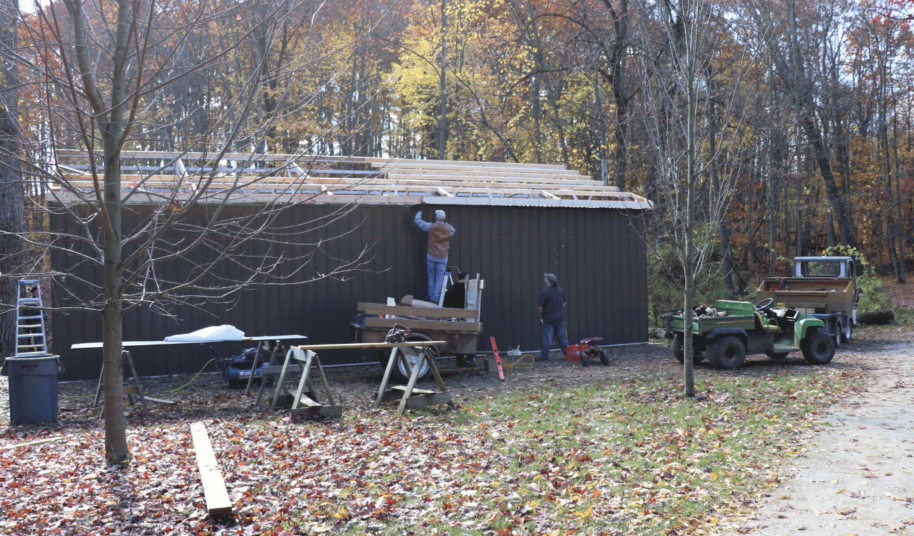
Properties
Maintaining a Scout camp property involves various challenges that can affect the bottom line of the camp and your local council. Here are three common myths about maintenance that can hurt your camp and council’s financial health:
Myth 1: Maintenance Is Only Necessary When Something Breaks
Reality: Waiting for things to break can lead to costly repairs and downtime. Preventive maintenance, such as regular inspections and servicing, can help identify and address issues before they become major problems. This approach can save your camp money in the long run by reducing the need for extensive repairs and ensuring that facilities are safe and functional. This is one of the reasons the NCAP standards include a pre and post camp inspection – so you can proactively prepare for camp.
Myth 2: Outsourcing Maintenance Is Always More Expensive
Reality: While outsourcing maintenance may seem more costly upfront, it can save money in the long term. Professional maintenance providers often have specialized knowledge and equipment that can lead to more efficient and effective repairs. Additionally, outsourcing allows your camp staff to focus on their core responsibilities, leading to increased productivity and potentially reducing overall costs. It is important to budget for additional maintenance support to supplement the knowledge and skillset of your on-site camp ranger. Your camp ranger(s) has many responsibilities and may need additional help to prepare camp to open.
Myth 3: Cutting Maintenance Costs Is a Good Way to Save Money
Reality: While cutting maintenance costs may seem like a quick way to save money, it can end up costing your camp more in the long run. Neglecting maintenance can lead to equipment failures, safety hazards, and a decrease in property value. Investing in regular maintenance can help your camp avoid costly repairs and ensure that facilities remain in good condition for years to come. Owning a camp (or multiple camps!) is not easy and funding maintenance is critical to managing these assets. Ensure that your maintenance budget reflects the needs of your specific camp(s). Start by estimating the annual costs for routine maintenance tasks such as groundskeeping, building repairs, and equipment servicing. Consider factors such as the age and condition of your facilities, as well as any upcoming maintenance projects. It’s also wise to budget for unexpected repairs or emergencies. Leverage the NCAP tools (such as the CFET and CCIP) to help you predict and plan for maintenance costs. Finally, utilizing the FIIX software can help you plan for your annual maintenance costs accurately. For details on FIIX, email andrea.watson@scouting.org.
In conclusion, maintaining a Scout camp property is essential for its long-term success. By dispelling these maintenance myths and investing in regular upkeep, your camp can save money, ensure safety, and provide a positive experience for campers and staff alike.
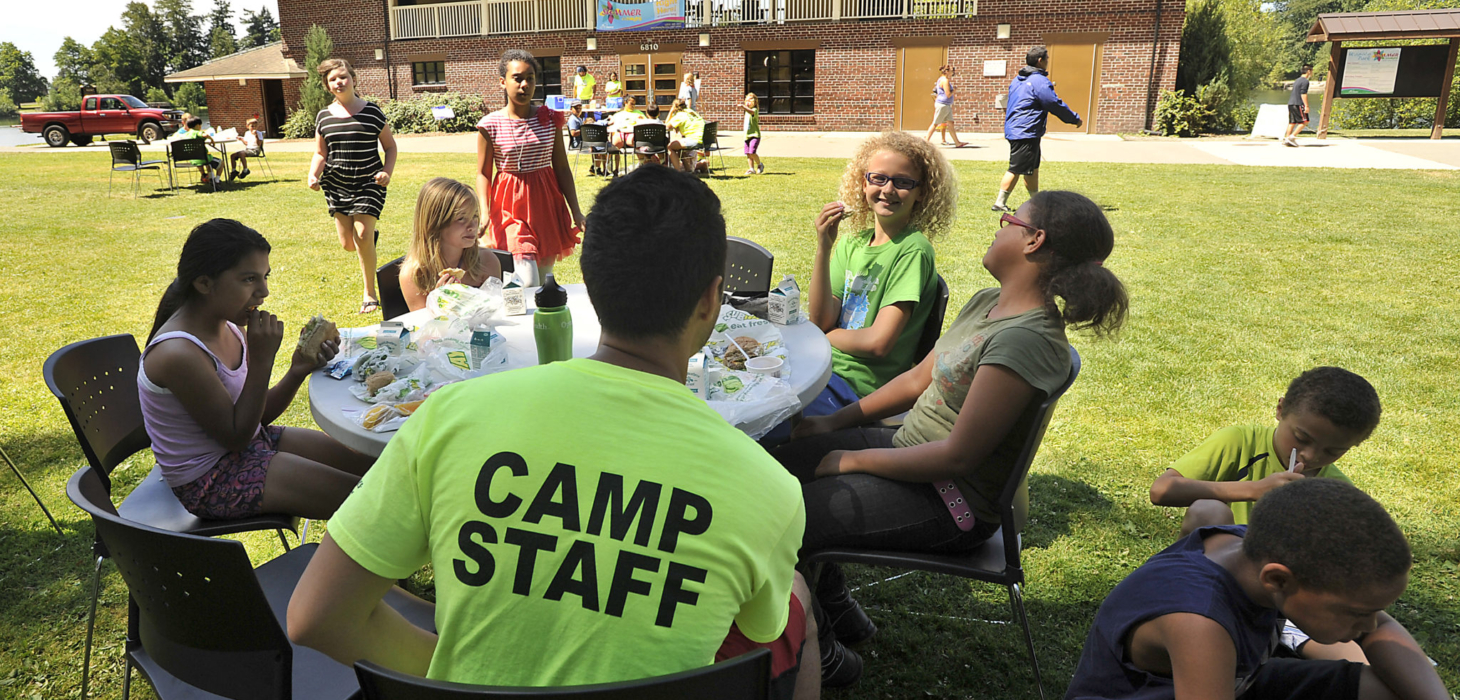
NCAP
As the countdown to camp season begins, camp directors shoulder the responsibility of ensuring their staff are well-prepared to deliver exceptional experiences for our Scouts who will attend. Developing and implementing a great training plan is the cornerstone of success, tailored to the unique demands of each camp type. Let’s take a moment to explore the essential components of staff training for long-term camps, and day camps, accompanied by practical checklists to streamline the preparation process.
For All Long-Term Camps and Day Camps: Before delving into camp-specific requirements, it’s vital to establish a foundation of universal training elements applicable to both of these camp types. Here’s a checklist of training that apply to all:
Youth Protection Training:
- All staff complete before or at camp before camp begins online.
- Renew every two years.
- ACTION ITEM: Collect copies of Youth Protection training for all staff. (Could be done in advance of camp!)
Understanding and Preventing Youth-on-Youth Abuse Training:
- Completed during staff training in-person.
- Renew annually.
- ACTION ITEM: Add to written staff training plan
- ACTION ITEM: Collect copies of training certificates for all staff or use a sign in roster on a training record.
Staff First-Aid Training:
- Ensure at least 50% of staff are certified.
- Maintain a ratio of 1:25 trained staff to campers.
- ACTION ITEM: Collect certifications from Staff. (Could be done in advance of camp!)
Hazardous Weather Training:
- All staff complete online.
- Renew every two years.
- ACTION ITEM: Collect copies of training certificates for all staff. (Could be done in advance of camp!)
In addition, for Day Camps: Day camps are a unique camp type, necessitating specific training adaptations. Here’s a checklist to tailor your training plan for day camp staff:
- Minimum of four to eight hours of training before camp.
- Follow agendas outlined in Day Camp Administration Guide or Cub Scout Day Camp Staff Training Guide.
- Implement Workplace Harassment Prevention Training specifically for paid staff (available online only).
- ACTION ITEM: Retain copies of Workplace Harassment Prevention Training certificates on-site and at the council office (if applicable).
For Long-Term Camps: Long-term camps demand a more comprehensive training approach and encompass extended durations and specialized skill sets. Here’s a checklist to elevate your staff training for long-term camps:
- Provide a minimum of 28 hours of staff training.
- Incorporate program-specific outlines.
- Allocate 10 extra hours of training for each additional type of long-term camp. (i.e. Cub Scout, Scouts BSA or Venturing)
- Supervise training with personnel trained at National Camping School.
- ACTION ITEM: Develop a staff training plan showing 28 hours of training (above and beyond physical set up of camp). The NCAP assessment team will need to see this plan and it can be submitted with your Declaration of Readiness.
Multiple Program offerings. Facilitating seamless integration between staff members transitioning across different camp types is essential for maintaining consistency and quality. Here’s a checklist to promote staff moving from one camp program type to another:
- Brief staff on program guidance and program delivery for each camp type.
- Develop program plans for each program activity in each program type using the age-appropriate guidelines.
- Address differences in program groups, including gender- and age-related issues.
While this list is not all the things you need to do to train your staff it will give you a good starting point in developing your staff training plan. Remember that your plan needs to be in writing and approved by the appropriate council committees.
As camp director, your commitment to staff training sets the stage for a memorable and enriching camp experience for all. By leveraging these checklists and tailoring your training plan to suit the specific needs of each camp type, you empower your staff to excel in their roles, ensuring camper safety, growth, and enjoyment throughout the season. With careful preparation and attention to detail, you can embark on the upcoming camp season with confidence and enthusiasm.
Resources: For more information on staff training see NCAP standard SQ-402. Additional information and staff training guidance for long-term camp can also be found in the upcoming revised Camp Staff Training Guide which will be released at the end of April 2024.

Aquatics
Did you know that the largest percentage of fatal drownings in the United States in kids 19 and younger occur in open water, such as lakes, oceans, and rivers? To get an idea of just how quiet and undramatic from the surface drowning can be, consider this: It is the No. 2 cause of accidental death in children ages 15 and under, just behind vehicle accidents.
Some drownings occur because people do not recognize the signs it is happening. No yelling, no waving. Just a silent gasping for air and 20 to 60 seconds later, submersion. And someone has drowned, maybe in plain sight.
Since the inception of Scouting, learning to swim and engaging in aquatics activities have been core to the program. More than 1.5 million aquatics-related merit badges have been earned by Scouts BSA since 2009. The BSA has also been a leader in promoting and providing training in aquatics safety. For at least 80 years, checklists have been in place to make sure those aquatic experiences are positive ones.
Safe Swim Defense and Safety Afloat govern BSA swimming and boating activities. These programs help provide leaders, Scouts and parents with the tools they need to be prepared to participate in aquatics activities. These programs are the BSA way to conduct a safe and fun aquatics program.
Be prepared for your aquatics adventures this summer!
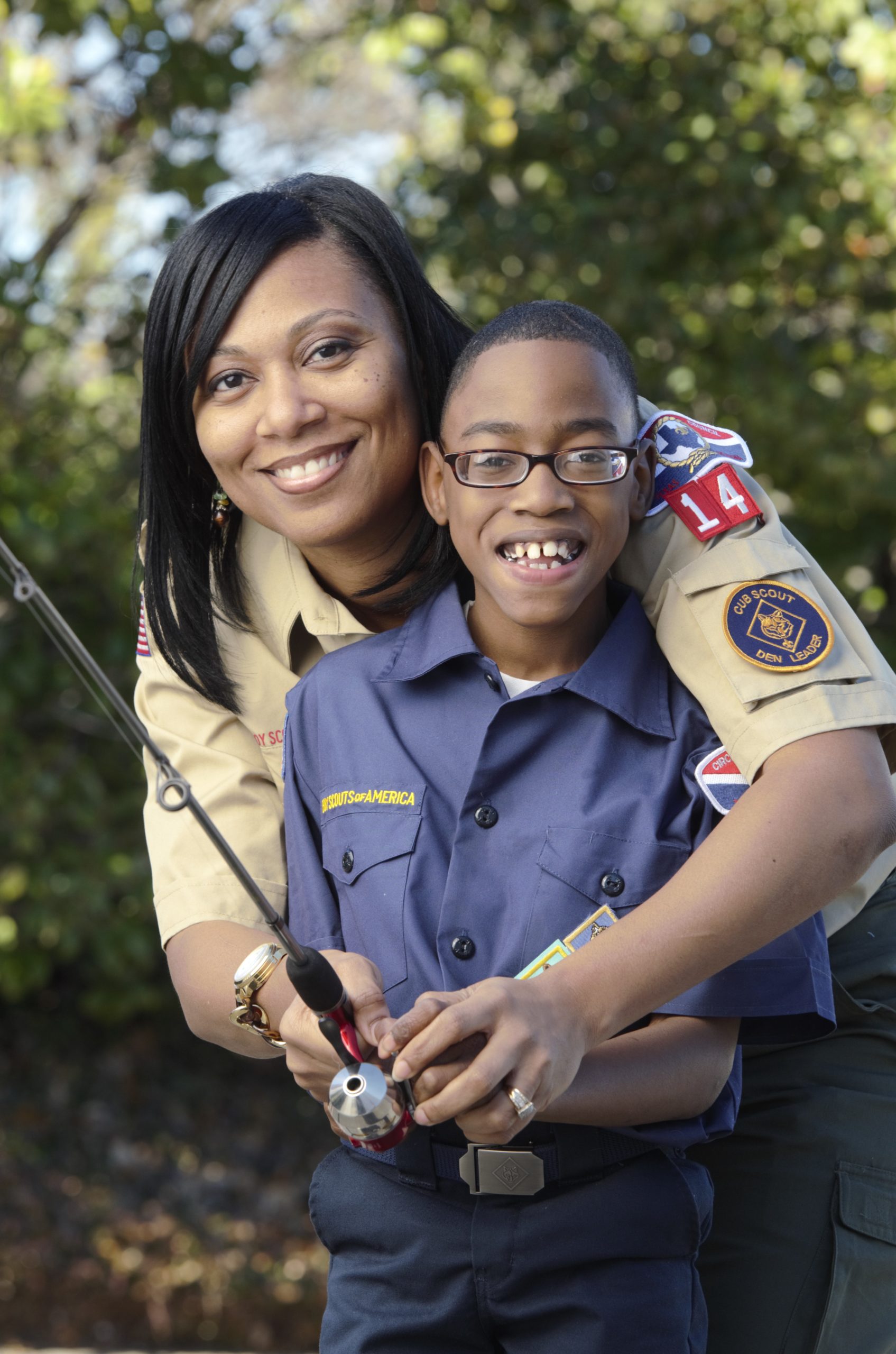
Fishing
What makes fishing such a great outdoor activity? Especially today, we are not fishing to feed our families. We fish for the challenge of fooling the fish into thinking we can imitate the natural environment and their prey. Many times, we catch and release the fish. We do this so we can keep a resource and possibly catch them when they have grown bigger.
Most times we go fishing not to catch fish but, to be outside many times sitting next to a beautiful mountain stream or rocking with the blue ocean. It is an activity that will transport us away from the stresses of everyday life and the only thing we can think about is concentrating on what we must do next to catch that fish.
The act of fishing drives us to want to preserve this experience for ourselves. In the long run, it makes us want to preserve it for future generations. From this, we learn about wildlife conservation. Fishing teaches us to care about things beyond ourselves.
The fact is that I would probably not be a Scout Leader without fishing.
My father was raised in a very poor part of Los Angeles from a poor Japanese immigrant family. The local Catholic Church had the best school in the area. My Grandparents valued education as the way out of poverty so my dad and his brother we enrolled in that school.
That school had a Boy Scout Troop. My father told me that his lifetime love of fishing came from learning to fish in Boy Scouts. He passed his love for fishing to me and enrolled me in Scouts as soon as I was old enough. I did the same thing when my son was old enough to be a Tiger Scout. My dad only became a Second Class Scout but he always lived by the Scout Oath and Law.
We, as Scout Leaders, have many opportunities to influence many generations ahead of us. It is why most of us are Scout Leaders. It would have to be obvious to you why, I have chosen fishing as my way of keeping Youth active in our movement. We all must have that special bait to keep and retain Youth. Therefore, fishing is my tool.

Sponsored Content
[Sponsored Content]
Dear Scouting America Leaders,
As you prepare for the changes to the National Camp Standards that took effect on January 1st, we understand that keeping your camp environment safe and compliant is a top priority. The new policy will require all upper bunks to have guardrails, designed to reduce the risks of injury and enhance the safety of campers. This is the perfect time to evaluate your camp’s bunk beds and ensure they meet the new standards, and we’re here to help!
Why Our Heavy-Duty Metal Bunk Bed Frames Are the Best Choice for Your Camp
At HeavyDutyBunkBeds.com, we specialize in providing durable, safe, and compliant bunk bed frames designed to withstand the high demands of camp environments. Here’s why our heavy-duty metal bunk bed frames are the ideal solution for your camp:
- Built for Safety and Compliance
Our bunk beds come equipped with sturdy, fully integrated guardrails that meet or exceed the required height and safety standards, ensuring your camp is compliant with 2025 National Camp Standard FA-717. - Bed Bug Resistant Design
Our frames are designed with welded tubes on all four sides, creating a solid and smooth surface that prevents bed bugs from entering or nesting in the frame. This added feature makes it much easier to keep your camp environment safe and hygienic. The welded construction also eliminates gaps that could serve as hiding spots for pests, offering peace of mind to camp staff and parents alike. - Durability That Lasts
Our heavy-duty metal frames are engineered to withstand years of high-traffic use in camp settings. Constructed from high-quality materials, they are rust-resistant, strong, and built to handle the rough and tumble of camp life, ensuring that your investment lasts for many seasons to come. - Easy to Maintain
Designed for easy assembly and minimal maintenance, our metal bunk beds are perfect for busy camp staff. The robust construction ensures that the frames remain secure, while the simple design makes it easy to clean and inspect for safety over time. - Comfort and Stability
Your Scouts deserve a comfortable, stable, and secure place to rest after a day of activities. Our bunk bed frames provide a solid foundation for mattresses, ensuring campers sleep soundly without worrying about wobbling or instability. - Cost-Effective for Camp Budgets
We understand that camps operate on tight budgets, which is why we offer competitive pricing for our heavy-duty metal bunk beds. You get superior quality and durability at a price that fits your camp’s financial needs.
Ensure Your Camp Is Ready for 2025
With the new bunk bed safety policies that went into effect on January 1st, 2025 (NCAP Standard FA-717), now is the time to upgrade or replace your old bunk beds to ensure your camp is fully compliant. Our heavy-duty metal bunk bed frames meet all the necessary safety standards, are built to last, and provide your campers with a secure, comfortable environment for restful nights and exciting days ahead.
Reach out to us today to learn more about our products, request a quote, or schedule a consultation. We’re here to help you ensure your camp stays safe, compliant, and ready for whatever adventure comes next!
Best regards,
Dick Bouman
EM: Dick@essuniversal.com
PH: 616.229.0597
www.HeavyDutyBunkBeds.com
Ps. If you have any questions about the new regulations, our bed bug resistant frames, or our bunk bed frames in general, don’t hesitate to get in touch. We’re happy to assist you in making the best choice for your camp!
CLICK HERE to view video testimonials from camp directors
CLICK HERE to view a video preview of the Dallas Single Over Single Bunk Bed
[Sponsored Content]
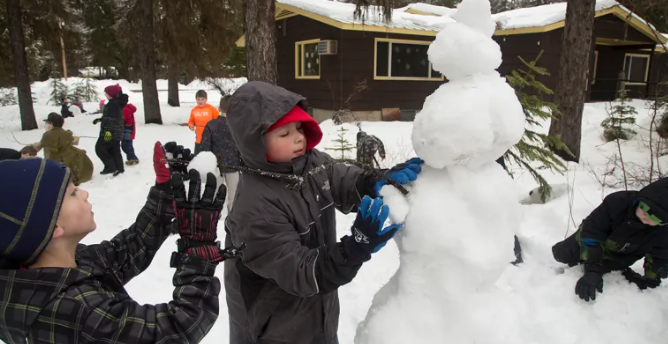
Cub Scouting
Winter is a magical season that provides unique opportunities for Cub Scouts to explore the outdoors, learn new skills, and earn adventures in a safe, exciting environment. Many Cub Scout ranks include adventures that can be completed in cold-weather settings, allowing Scouts to stay active, learn resilience, and foster teamwork. For example:
Lion Cub Scouts – Fun on the Run!
This adventure teaches Lion Cub Scouts about being active and having fun while exercising. In the winter, you can adapt this to include winter-themed games and activities.
Winter Adaptations:
- Sled Racing: Set up a sled race in a safe area with a slight incline. Lions can race their friends on sleds or snow tubes.
- Snowball Toss: Create a target for the Cubs to throw snowballs (or soft alternatives if no snow) into, turning it into a fun winter challenge.
- Snowman Relay: Organize a relay race where Scouts “build” a snowman by collecting snowball-sized items (such as white socks or small balls) and rolling them to a “snowman” station.
Tiger Cub Scouts – Tigers in the Wild
This adventure introduces Tigers to nature and the outdoors. It’s a great adventure to adapt to winter exploration, focusing on how nature changes during the colder months.
Winter Adaptations:
- Winter Nature Hike: Take a nature hike and point out the changes in plants, trees, and animal activity in the winter. Discuss how animals survive the cold weather, such as hibernation or migration.
- Winter Wildlife Observation: Bring out a pair of binoculars and observe birds, tracks, or other signs of wildlife in a winter forest or park. Teach Cubs how to stay quiet and respectful when observing animals.
Wolf Cub Scouts – Running with the Pack
This adventure is all about sports and physical fitness. It’s a great time to adapt it to winter sports and games that encourage physical activity in cold weather. Winter Adaptations:
- Winter Sports Relay: Set up a relay race featuring winter sports, like sledding down a hill, snowball tossing, or a snowshoe race (if snowshoes are available).
- Winter Obstacle Course: Create an obstacle course with a winter theme, like running around snowmen, crawling under branches, or jumping over snow mounds.
Bear Cub Scouts – Roaring Laughter
This adventure is all about fun and laughter! Adapt if for the winter by ending your event with a cozy campfire gathering. Bring everyone together at the end of the day for a campfire (if local guidelines allow). Campfire songs, storytelling, and hot chocolate create a warm conclusion to winter activities and give Scouts a chance to reflect on their achievements.
- Have a “funniest joke contest”.
- Play charades with the larger group!
Webelos & Arrow of Light Scouts
With these two ranks, engage Scouts with winter-themed skills such as starting a fire safely, tying knots while wearing gloves, or building a winter shelter. These skills add a sense of adventure and can apply to adventure loops, providing advancement and fun challenges for each rank. Additional ideas could include:
- Knife Safety & Carving: Host a session indoors where Webelos and Arrow of Light Scouts can carve winter-themed figures like snowflakes or animals.
- Tech on the Trail (Webelos): Geocache in the snow!
- High Tech Outdoors (Arrow of Light): Help Scouts use apps to check the weather forecast and determine how to be prepared.
Email blast!
Email blast!




